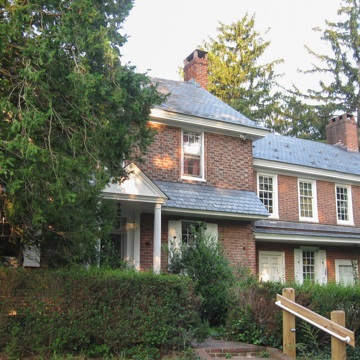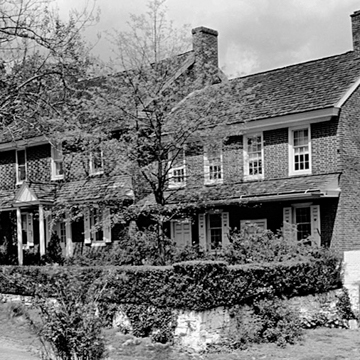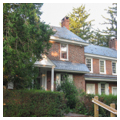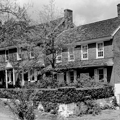John England immigrated from Staffordshire to operate Principio Furnace, Maryland, and three years later, in 1726, bought 400 acres on White Clay Creek. The brick house erected by his brother and heir, Joseph, bears a datestone of 1747. Historian Harold D. Eberlein says the brick wing at right was already standing, though it looks later; it shows traces of a Dutch oven, which connected to the huge fireplace inside. The section of 1747 has glazed-header brick-work with a scattering of putlog holes (holes where bricks were omitted so scaffolding could be inserted for construction or repair); pent eaves; and a wavy diaper pattern in one gable, somewhat recalling that of Wilmington's Presbyterian Church (WL58) of the same decade. The mill stands on massive stone foundations, one stone supposedly inscribed “I E 1789,” and has changed little since visited by HABS in 1937, at which time it was still grinding feed. It retains elements of its sideshot water turbine, which replaced the original undershot wheel (metal turbines were more efficient than the larger old wooden wheels).
You are here
John England House and Mill
If SAH Archipedia has been useful to you, please consider supporting it.
SAH Archipedia tells the story of the United States through its buildings, landscapes, and cities. This freely available resource empowers the public with authoritative knowledge that deepens their understanding and appreciation of the built environment. But the Society of Architectural Historians, which created SAH Archipedia with University of Virginia Press, needs your support to maintain the high-caliber research, writing, photography, cartography, editing, design, and programming that make SAH Archipedia a trusted online resource available to all who value the history of place, heritage tourism, and learning.





